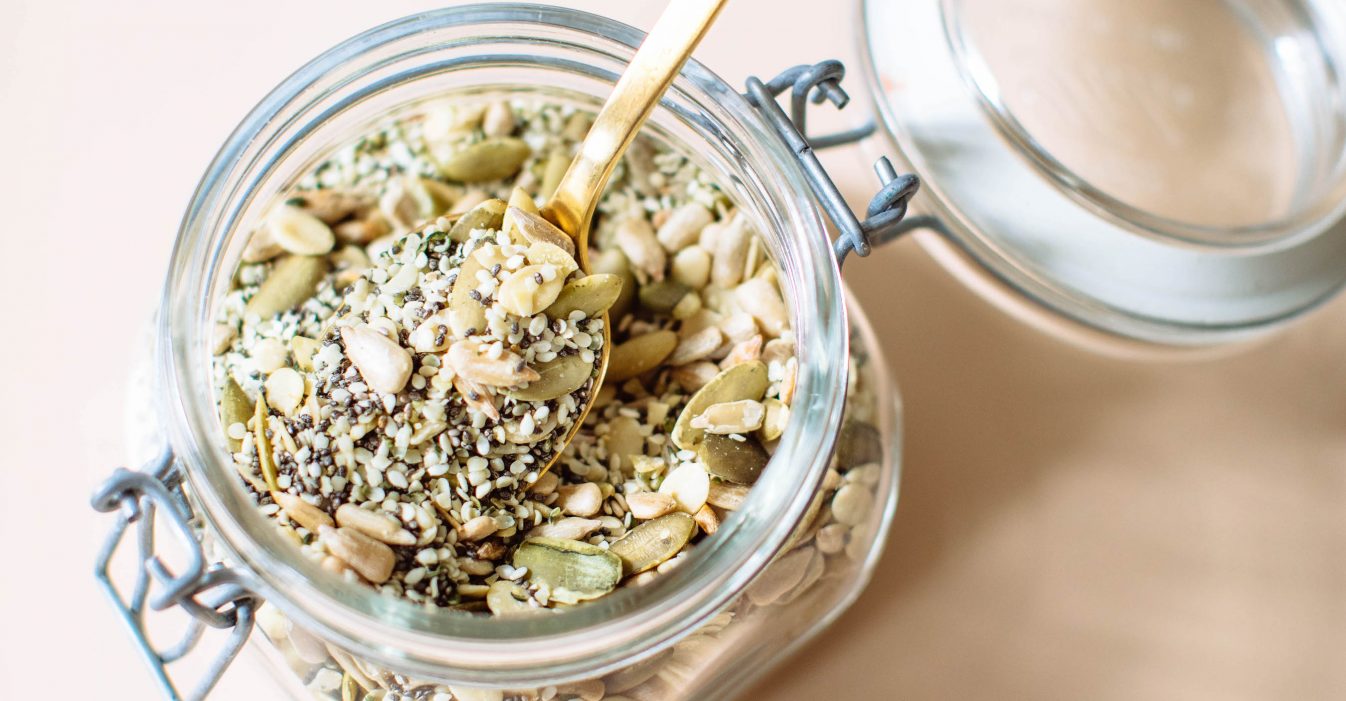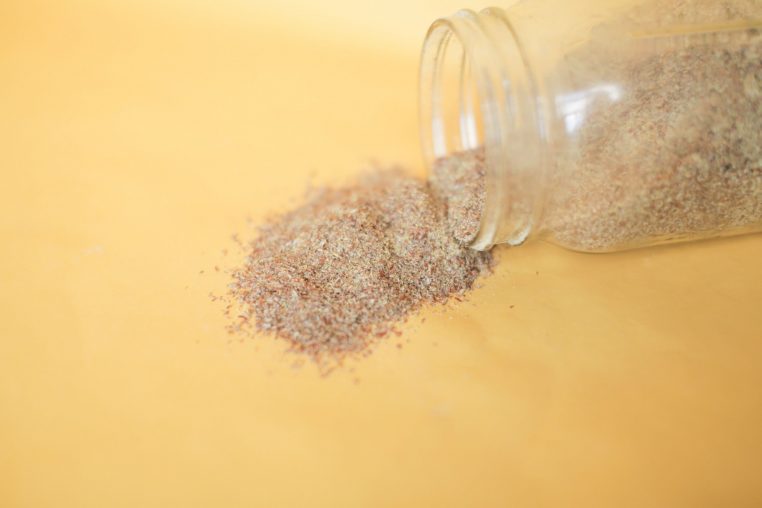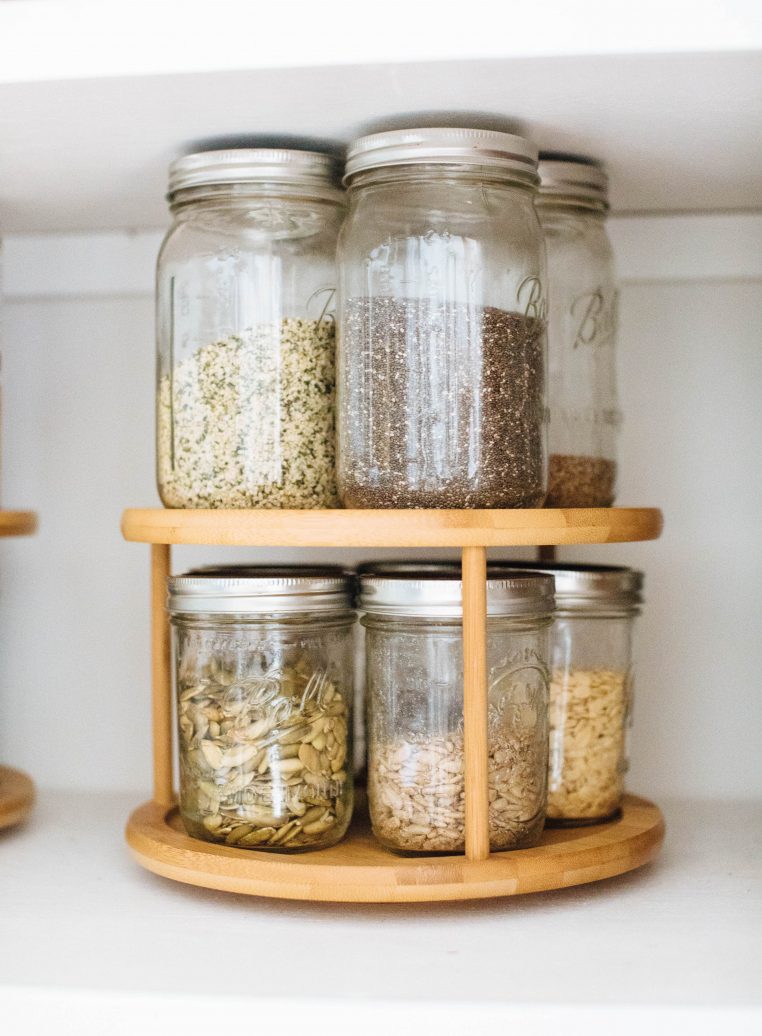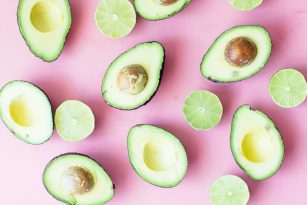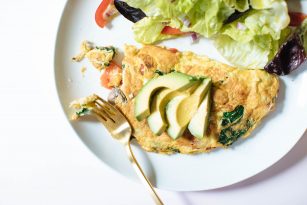The newest hormone-balancing diet trend. From the diet’s guidelines to the true science behind it all, we’re giving you the full scoop on seed cycling.
Chances are if you’ve been on social media within the wellness realm lately, you’ve seen a post or two referencing seed cycling. It’s one of the newest diet trends claiming to help balance hormones in order to increase fertility as well as modulate unwanted menopause and menstrual cycle symptoms.
We all know that seeds are packed with nutrients, but are they the key to hormone-balancing success? Let’s find out!
What Is Seed Cycling?
Seed cycling (sometimes referred to as seed syncing as well) is a naturopath-derived eating pattern. The diet recommends eating certain seeds in specific amounts during designated phases of your menstrual cycle.
The first 14 days of your menstrual cycle are referred to as the follicular phase (or phase 1) while the following 14 days are referred to as the luteal phase (or phase 2).
The diet also recognizes that not all menstrual cycles are regular. For those with a shorter cycle or irregular cycle, many naturopaths recommend following the phases of the moon as a general guideline. In this case, day 1 of your cycle would begin with the new moon.
Followers are suggested to abide by the diet for at least 3 months to see optimal results.
Seed Cycling Guidelines
Before we dive into the why and how let’s walk through the basic guidelines of the diet.
Seed Cycling Phase 1
On days 1-14 of your cycle (follicular), the diet recommends consuming a tablespoon or two of raw ground pumpkin and flax seeds.
Seed Cycling Phase 2
On days 14-28 of your cycle (luteal), the diet recommends consuming a tablespoon or two of raw ground sunflower and sesame seeds.
Why Are We Eating Seeds?
So we’ve got the logistics down — the concept of seed cycling suggests to consume specified seeds for designated periods of time during our menstrual cycle. But why seeds?
Supposedly, the nutrient composition of said seeds will positively impact your menstrual cycle.
In order to fully understand this diet, we need to first review the phases of the menstrual cycle as well as how seed intake may impact them.
Hormones And The Menstrual Cycle
In a normal menstrual cycle, two phases occur which directly impact hormone production in the body.
P.S. This is a greatly simplified description of the menstrual cycle – the purpose is just to give you an idea of what hormones are being produced when.
The Follicular Phase
The first phase of the cycle starts on the first day of your period. During this phase, the amount of estrogen in the body increases as the eggs in the ovaries mature.
The rise of estrogen is a result of the release of the follicle-stimulating hormone by the hypothalamus (essentially the control center for hormones). The purpose of this rise in estrogen is to strengthen the uterine lining to prepare for a pregnancy.
Following the rise in estrogen, estrogen production slows due to a rise in luteinizing hormone and a decrease of follicle-stimulating hormone.
The Luteal Phase
The second half or phase of the cycle begins once an egg has been released. At this point, levels of progesterone will increase. The purpose of the increase in progesterone is to make it easier for a fertilized egg to implant in the uterus.
If pregnancy does not occur during this phase, progesterone levels will subsequently decrease and the cycle will start all over again.
Seeds And Hormones In Seed Cycling
This next part is where the seeds come in. Generally speaking, it all comes down to how eating seeds impacts the major hormones in the menstrual cycle – estrogen and progesterone.
Lignans
According to seed cycling promoters, the key player in seeds is the lignan family. Lignans are a type of polyphenol found in seeds. They’re also found in other plant-based food items such as fruits, vegetables, legumes, and whole grains.
Lignans are a dietary source of phytoestrogens.
Phytoestrogens are commonly referred to as ‘dietary estrogens’. Phytoestrogens have a very similar chemical makeup to estrogen, allowing them to act similarly to estrogen in the body when consumed (1).
Seed cyclers essentially believe the phytoestrogens found in pumpkin, flax, sunflower and sesame seeds can facilitate the increase and decrease of estrogen and progesterone accordingly throughout their cycle.
More specifically, when flax and pumpkin seeds are consumed during the first half of the cycle, they will promote the increase of estrogen. Then when phase 2 takes place where sesame and sunflower seeds are eaten daily, this will help encourage accurate progesterone levels.
Zinc
Many seed cycle proponents also mention zinc in their explanation for using the chosen seeds at their chosen times. Particularly in flax seeds, pumpkin seeds, and sesame seeds.
It is believed to help increase levels of estrogen during phase 1 and increase progesterone levels in phase 2.
Vitamin E
The vitamin E content of sunflower seeds is also mentioned as a contributing component. It supposedly increases progesterone levels in phase 2.
Who Is Seed Cycling For?
Now that we understand the supposed benefits of seed cycling, who is this diet specifically for? It’s recommended for those who have hormonal disorders such as PCOS or infertility.
The diet is also often suggested to those with irregular periods, extreme PMS symptoms, endometriosis and women experiencing menopause to help decrease symptoms and regularize periods.
Should You Try Seed Cycling?
Are seeds healthy for us? Absolutely. Do I recommend seed cycling for hormone balance? Not necessarily, and let me explain why.
Health Benefits Of Seed Intake
Yes, lignans are present in seeds. More specifically, flax seeds and sesame seeds have the highest amount of lignans present out of all food items to date (2).
Additionally, clinically speaking, phytoestrogens are often associated with the possible prevention of heart disease, osteoporosis, breast cancer and high blood pressure in postmenopausal women (3, 4, 5).
Excellent!
More Research Needed On Women
Even still, the full understanding of phytoestrogens and their impact on said disease states is not yet fully understood (6). There is even some research that has shown that phytoestrogens have an insignificant impact on the cycle of premenopausal women (7).
As far as zinc and vitamin E are concerned, while vitamin E has been associated with a decrease in PMS symptoms, it was through supplementation as opposed to seed intake (8). They’re vital components to a healthy diet, but neither of them has been directly associated with estrogen or progesterone level production (9).
Furthermore, there is currently no significant research on the recommended seed cycling guidelines. There is also minimal evidence proving a significant impact on hormone levels from seed intake in general.
There just isn’t enough research done yet to warrant a direct recommendation for seed cycling to balance hormones specifically.
The Bottom Line
There isn’t enough research that specifically proves a connection between cycle-timed seed intake and improved hormone levels.
Should you still consume flax, pumpkin, sesame and sunflower seeds? Of course! They’re all packed with fiber, vitamins, and minerals. Seeds have been proven time and time again to positively impact your health.
They can help keep your heart healthy, digestion on track, cholesterol levels in check and even boost satiety after meals.
It’s important to remember that hormonal health and finding balance with your hormones isn’t as simple as adding in a seed cycling protocol. It’s looking at the bigger picture of your diet and lifestyle, and getting professional and expert guidance is absolutely key! Should you try it then? Absolutely! But again, for the reason to reep the nutrient benefits of seeds, not necessarily for the purpose of a magic mix of seed to balance your hormones.
What To Do Next
While seed cycling may not be the answer to your current predicament, there are so many other diets and lifestyle changes you can make to help balance and maintain ideal hormone levels.
Everyone is different, therefore everyone’s diet and lifestyle interventions need to be individual as well. Whether you’re looking to manage your PMS symptoms, PMDD, work through PCOS or infertility, working with a trained health professional is your best bet.
A registered dietitian can walk through your diet and lifestyle habits to help you determine the best plan moving forward. Click here to work with our team!
What Are Your Thoughts on Seed Cycling?
I would love to hear from you – what has your experience been with seed cycling? Had you heard of it before? Maybe you tried it out for yourself?
I’m sure there are plenty of others out there who would love to hear about your experiences as well! As always, you can also connect with us on Instagram via @nutritionstripped, @nutritionstrippederica, #nutritionstripped and #nswellnesscoaching.

